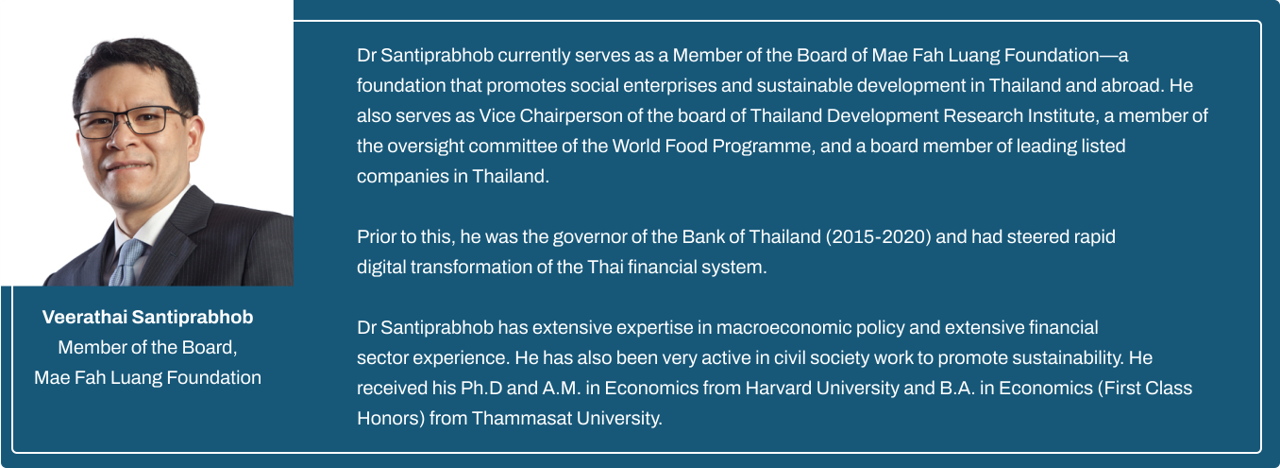Capitalism is in crisis. The consensus among politicians, citizens and even executives themselves – on both sides of the political spectrum and throughout the world – is that business just isn’t working for ordinary people.
The 2007 financial crisis cost nine million Americans their jobs and 10 million their homes. The economy has recovered since then, but the gains have largely gone to bosses and shareholders, while ordinary incomes have stagnated. In 2018, just 26 tycoons owned the same wealth as the 3.8 billion poorest citizens in the world.
Corporations affect not only people, but also the planet. The environmental costs created by business are estimated at $4.7 trillion per year. Notable examples are the Deepwater Horizon disaster, which spilled five million barrels of oil into the sea, and Volkswagen’s dodging of emissions tests, which caused an estimated 1,200 deaths in Europe alone.
Citizens, and the politicians who represent them, are fighting back. The precise reaction varies – occupy movements, Brexit, electing populist leaders, restricting trade and immigration, and revolting against CEO pay. But the sentiment’s the same. “They” are benefiting at the expense of “us”.
While radical calls to reform business drum up significant support, they risk throwing out the baby with the bathwater and ignore the positive role that businesses can play in society. Successful businesses design products that transform customers’ lives for the better, provide employees with a healthy and enriching workplace and preserve the environment for future generations. Merck’s drug Mectizan has substantially reduced river blindness worldwide; Vodafone’s mobile money service M-Pesa has lifted 200,000 Kenyans out of poverty; and Google’s maps, search engines and shared documents make millions of lives easier each day. Moreover, successful businesses generate profits. Profits aren’t evil value extraction, but serve a crucial role in society, providing returns to parents saving for their children’s education, pension schemes investing for their retirees and insurance companies funding future claims.
Viewing business as “them” and society as “us” is an example of the pie-splitting mentality (see Figure 1). It sees the value that a company creates as a fixed pie. Thus, any slice of the pie that goes to business reduces the slice enjoyed by society. In this view, the best way to increase society’s take is to straitjacket business so that it doesn’t make too much profit. Sadly, the pie-splitting mentality is practiced by many CEOs, too. They think the best way to increase profit is to reduce society’s slice by price-gouging customers or exploiting workers.

Business and society, in this view, are enemies. And the battle they’ve been fighting has been around for centuries. Think of the late 19th century robber barons who created giant monopolies such as Standard Oil; policymakers responded by breaking some of them up. Or trade unions in the 1970s, followed by legislation that caused their decline. Or the rise of big banks in the early 20th century which culminated in the 1929 financial crisis and their regulation by the Glass-Steagall Act – itself partially reversed since the 1980s, contributing to another crisis in 2007. Unless we can come up with another way, this movie will keep on being replayed.
But there is another way...
By applying a radically different approach to business, companies can create profit for investors and value for society. The pie-growing mentality stresses that the pie is not fixed. By investing in stakeholders, a company doesn’t reduce investors’ slice of the pie, as assumed by some CEOs – it grows the pie, ultimately benefiting investors. A company may improve working conditions out of genuine concern for its employees, yet these employees become more motivated and productive. A company may develop a new drug to solve a public health crisis, without considering whether those affected are able to pay for it, yet end up successfully commercialising it. A company may reduce its emissions far beyond the level that would lead to a fine, due to its sense of responsibility to the environment, yet benefit because customers, employees, and investors are attracted to a firm with such values.
In the pie-growing mentality, a company’s primary goal is to serve society rather than generate profits. Surprisingly, this approach typically ends up more profitable than if profits were the end goal. That’s because it enables investments to be made that end up delivering substantial, long-term pay-offs.
It’s important to acknowledge that a profit-focused company will still invest in stakeholders – but only if it calculates that such an investment will increase profits by more than the cost of the investment. Indeed, comparing costs and benefits is how finance textbooks argue companies should decide whether or not to take an investment.
But real life isn’t a finance textbook. In practice, it’s very difficult to calculate the future payoff of an investment. In the past, this was easier when investments were in tangible assets – if you build a new factory, you can estimate how many new widgets the factory will produce and how much you can sell them for. Most of the value of a 21st-century firm comes from intangible assets, such as brand and corporate culture. If a company improves working conditions, it’s impossible to estimate how much more productive workers will be and how much greater profit this increased productivity will translate into. The same is true for the reputational benefits of a superior environmental record.
A company that’s free from the shackles of having to justify every investment by a calculation will invest more and may ultimately become more profitable.
“The starting point is to define its purpose – why it exists and the role that it plays in the world.”
This new approach to business is the subject of my forthcoming book Grow the Pie: How Great Companies Deliver Both Purpose and Profit. I wrote it out of concern for the polarisation between business and society that the world finds itself in. In the face of this conflict, it’s a fundamentally optimistic book – not based on blind hope, but on rigorous evidence that this approach to business works, across industries and for all stakeholders, and is an actionable framework to turn hope into reality.
Let’s look at that evidence. The idea that both business and society can benefit might seem to be too good to be true. However, rigorous evidence suggests that companies that treat their stakeholders well deliver superior long-term returns to investors. For example, one of my own studies (profiled in my TEDx talk, The Social Responsibility of Business), shows that companies with high employee satisfaction outperformed their peers by 2.3%-3.8% per year over a 28-year period. That’s 89%-184% compounded. Further tests suggest that it’s employee satisfaction that leads to good performance, rather than the reverse. Other studies find that customer satisfaction, environmental stewardship, and sustainability policies are also associated with higher stock returns.
So, creating value for stakeholders isn’t just a worthy ideal – it’s good business sense. When I speak to practitioners on the importance of purpose, I’m introduced as a professor of finance and the audience often thinks they’ve misheard. The finance department of a company is frequently the enemy of purposeful business, believing that it’s simply a distraction from creating profits. This might be true in the short › term, but the long-term evidence shows that any finance department with this mindset is failing at its job. The positive relationship with long-term returns also means that it’s in companies’ own interest to transform the way they do business and take very seriously their impact on society. In fact, it’s urgent that they do. Otherwise, anti-business regulations will be passed and customers and workers will switch to competitors whose values they share. Serving society isn’t an optional extra to be confined to a CSR department, but should be fundamental to how a business is run.
A shift in thinking
The pie-growing mentality shifts our thinking on some of the most controversial aspects of business. First, it transforms what leaders’ and enterprises’ responsibilities are, and what society should hold them accountable for. We often “name and shame” companies who engage in errors of commission – actions seen as pie-splitting, such as making what we see as too much profit. But high profits may be a by-product of serving society. Instead, we should hold businesses accountable for errors of omission – spurning opportunities to grow the pie through inaction. For example, Kodak failed to invest in digital cameras and ultimately went bankrupt. It’s rarely seen as a corporate-governance failure, because investors didn’t profit – but that’s of no consolation to the 150,000 workers who were made redundant. An irresponsible company is one that shrinks the pie or fails to grow it, harming everyone.
Second, the pie-growing mentality changes our view on how to reform executive pay. The level of CEO pay is perhaps the single most-cited piece of evidence that business is out of touch with society. In the US, the average S&P 500 CEO earned $14 million in 2017, 361 times the average employee. The idea is that, if the CEO wasn’t so greedy, their pay could be redistributed to colleagues or invested. But that’s the pie-splitting mentality. The amount that can be reallocated through redistributing the pie is tiny. The median equity value in the S&P 500 is $22 billion. $14 million is only 0.06% of the pie – far smaller than the 2.3%-3.8% that can be created by growing the pie through improving employee satisfaction.
Moreover, just like high profits, high pay could be a by-product of creating value. It’s fair for CEOs to be paid like owners – to own a long-term share in the business, so that the CEO is on the hook if they underperform. But the flip side is that, if they grow the long-term stock price, they’ll automatically be rewarded as their shares will be worth more. For example, Disney CEO Bob Iger was criticised for earning $66 million, but the market value of Disney had risen by 578% in his four years at the helm, and 70,000 jobs had been created – so we shouldn’t criticise high CEO pay without first asking whether it results from
pie-growing or pie-splitting.
And that’s where there is major room for reform. Some CEOs aren’t paid like long-term owners. They’re instead given bonuses based on short-term targets – so it’s possible for them to earn millions by exploiting workers and customers. The solution isn’t so much to change the level of pay, even though this might win the most headlines, but its structure – to move away from short-term targets and pay the CEO with shares that they can’t sell for (say) five years. Giving long-term incentives rewards them for pie-growing and discourages pie-splitting. Importantly, they should continue to hold their shares after retirement, to ensure that their horizon extends beyond their tenure. And shares should be awarded to all employees, to ensure that everyone benefits from pie-growth. If the company does well, it’s not just due to the CEO.
Third, the pie-growing mentality shifts our thinking on investors. Investors are often viewed as nameless, faceless capitalists who extract profits at the expense of society. One book claimed that “Shareholder activists … are more like terrorists who manage through fear and strip the company of its underlying crucial assets … extracting cash out of everything that would otherwise generate long-term value” and politicians in both the UK and US have made proposals to restrict investor rights. But such views aren’t backed up by the evidence. Rigorous studies show that, while shareholder activism does indeed increase profits, this doesn’t arise from pie-splitting but pie-growing – improved productivity and innovation, which in turn benefits society.
Investors are not “them”; they are “us”. As mentioned earlier, they include ordinary citizens saving for retirement and mutual funds and pension funds investing on their behalf. Policies that suppress investors will not only make companies less purposeful and less productive, but also harm citizens. Investors aren’t the enemy, but allies in growing the pie. Any serious proposal to reform business should place investor engagement front and centre.
Putting it into practice
So, how does a company actually “grow the pie”? The starting point is to define its purpose – why it exists and the role that it plays in the world. A purpose might be to develop medicines that transform citizens’ health; to provide an efficient rail network that connects people with their jobs, family and friends; or to manufacture toys that entertain and educate children.
Importantly, a company’s purpose cannot be to earn profits – instead, profits are a by-product of serving a purpose. This is similar to how a citizen’s vocation is not to earn a salary; instead, they earn a salary by choosing a career they enjoy and thus flourish in. Equally importantly, a purpose should be focused. Many companies have broad purpose statements, such as “to serve customers, colleagues, suppliers, the environment and communities, while generating returns to investors,” because they sound aspirational. But a purpose that tries to be all things to all people offers little practical guidance because it sweeps the harsh reality of trade-offs under the carpet.
Leaders need to make tough decisions that benefit some stakeholders at the expense of others. For example, closing a polluting plant helps the environment but hurts employees. A focused purpose statement highlights which stakeholders are first among equals to guide such a trade-off.
Evidence highlights the criticality of focus. Companies that do well on environmental, social and governance dimensions across the board don’t beat the market. But those that do well on only dimensions material to their business – and scale back on others – do significantly outperform.
The book introduces three principles (the principle of multiplication, the principle of comparative advantage and the principle of materiality) to provide practical guidance on which investments in stakeholders a company should make and when it should show restraint. This balance is critical. Some leaders misinterpret the call to “serve society” as an imperative to invest as much as possible and many politicians advocate such behaviour. But there are many cautionary tales of companies imploding through over-investment, Daewoo being a particularly prominent one.
Of course, purpose must go beyond a mere statement and must be put into practice. The book discusses five tools through which a company can do so – aligning its strategy, operating model, culture, reporting and governance. It also stresses the role of investors in stewarding a company’s purpose – holding CEOs to account for embedding it throughout the organisation and providing an independent sounding board on long-term issues. I provide a practical guide for how investors can undertake stewardship effectively and how the relationships between different players in the investment industry – asset managers, asset owners, investment consultants and proxy advisors – can be reformed from the transactional to the trusted; in turn providing the long-term context necessary for stewardship to thrive.
“Creating social value is neither defensive nor simply “worthy” – it’s good business.”
Citizens have a major part to play, too. The popular narrative is that corporations are so large that citizens are powerless to shape them. But I stress how citizens – in their roles as employees, customers and investors – enjoy agency: their capacity to act independently and influence their environment, rather than being acted upon
One source of agency is the power to put their time and money into companies that reflect what they would like to see in the world and walk away from others. Customer boycotts for allegedly non-purposeful behaviour are arguably more powerful than ever before due to social media, as shown by the #BoycottVolksvagen and #DeleteUber campaigns. In the modern firm, human (rather than physical) capital is more important than ever before and departures of key employees severely damage a company’s competitiveness
A second source of agency is the power to shape companies people choose to be members of. Every night, Abdul Durrant worked hard to clean the London offices of HSBC, including that of chair Sir John Bond. But he struggled to support his five children on his low wages. So Abdul attended HSBC’s AGM and addressed Sir John, saying: “I am here on behalf of all the contract staff at HSBC and the families of east London. We receive £5 per hour – a whole £5 per hour! – no pension and a measly sick pay scheme. In our struggles, our children go to school without adequate lunch. We are unable to provide necessary books for their education. School outings in particular they miss out on.” Moved by this plea, Sir John gave HSBC’s cleaners a 28% pay rise. This shows the power of a single employee to change the wage policy of a large multinational.
A collaborative effort
So it’s not business or society – it’s business and society. This observation gives us great hope, but also great responsibility. Not only can all stakeholders benefit from a growing pie, but it’s also their duty to work together to grow the pie. When they do so, bound by a common purpose and focused on the long-term, they create shared value in a way that enlarges the slices of everyone – shareholders, workers, customers, suppliers, the environment, communities and taxpayers.
Evidence suggests that visionary leaders can transform a company, growing the pie for the benefit of all. Engaged shareholders can intervene in a failing firm, growing the pie for the benefit of all. A motivated workforce can innovate from the bottom up, growing the pie for the benefit of all.
Importantly, an approach to business driven by purpose typically ends up more profitable in the long-term than an attempt to maximise shareholder value – so it’s one that leaders should voluntarily embrace, even in the absence of public mistrust or threats of regulation. Creating social value is neither defensive nor simply “worthy” – it’s good business. The highest-quality evidence, not wishful thinking, reaches this conclusion: to reach the land of profit, follow the road of purpose.
this article was first published on London Business School (31 Oct 2019). https://www.london.edu/think/how-great-companies-deliver-both-purpose-and-profit
Posted 08/08/2023

















